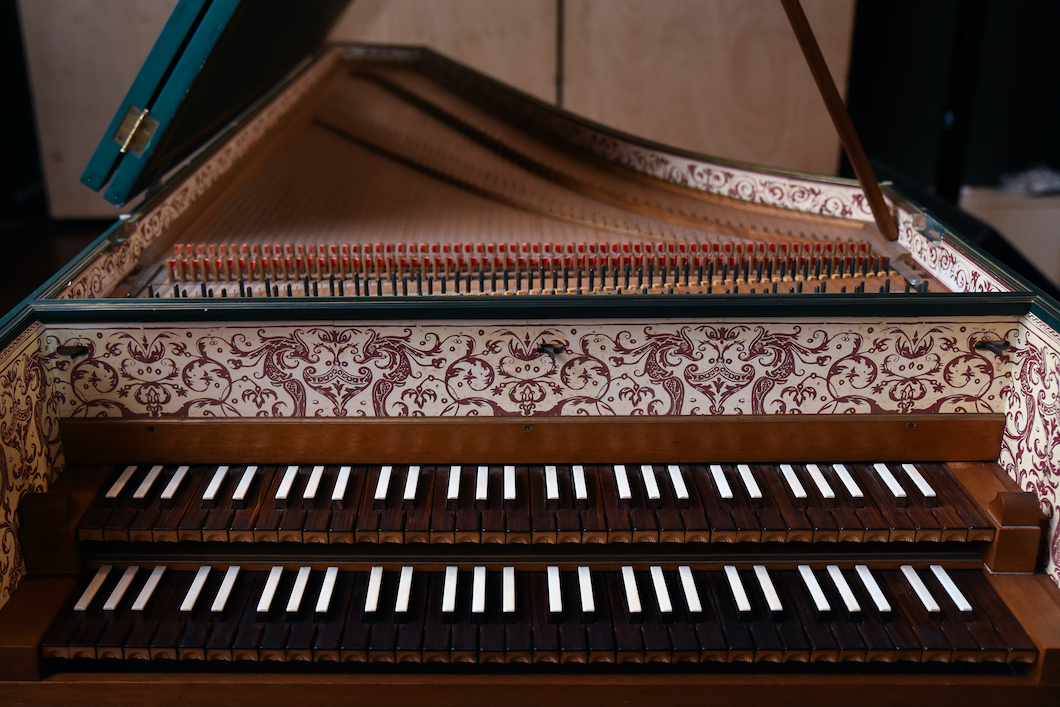
Characteristics, Philosophy, Era, and Notable Composers
Baroque music refers to a style of Western art music composed from approximately 1600 to 1750. The term “Baroque” comes from the Portuguese word “barroco,” meaning a misshapen pearl, symbolizing the elaborate and highly detailed style of the period. This era followed the Renaissance and preceded the Classical era, marking a time of great change and innovation in musical expression.
Characteristics of Baroque Music:
- Ornamentation: Baroque music is known for its ornate and elaborate melodies, often featuring trills, turns, and other decorative notes.
- Contrast: The music exhibits contrasts between loud and soft, solo and ensemble, and different musical textures (homophonic, polyphonic).
- Basso Continuo: A continuous bass line, often played by a keyboard (harpsichord or organ) and a bass instrument (cello or bassoon), provided harmonic structure and was a defining feature of the Baroque.
- Terraced Dynamics: Instead of gradual changes in volume, Baroque music often shifted abruptly from loud to soft, reflecting the contrast and drama of the period.
- Expressive Melodies: Melodies in Baroque music were expressive and emotional, often conveying feelings of grandeur, tension, or serenity.
- Unity of Mood: A piece usually maintained a single emotional mood or “affect” throughout, in line with the Baroque philosophy of depicting specific emotions.
Philosophy Behind Baroque Music: The Baroque era was heavily influenced by the idea of “affect,” or the expression of emotions. Composers sought to evoke specific emotions in their listeners, reflecting the Baroque belief that music could directly affect the human soul. This philosophy extended to the arts in general, with a focus on grandeur, drama, and expressiveness, often intertwined with religious themes, reflecting the Counter-Reformation’s impact on the arts.
The Baroque Era:
- Timeframe: The Baroque era spans from roughly 1600 to 1750. It began in Italy and spread throughout Europe, influencing music, architecture, and the visual arts.
- Historical Context: The Baroque period coincided with significant political, religious, and scientific changes in Europe. The Catholic Church’s Counter-Reformation, the rise of absolutist monarchies, and the scientific discoveries of figures like Galileo and Newton all played roles in shaping the era.
- Cultural Context: Baroque music was often composed for religious settings (e.g., masses, oratorios) and courtly functions (e.g., operas, concertos), reflecting the grandeur and authority of the church and state.
Notable Baroque Composers:
- Johann Sebastian Bach (1685-1750): A German composer known for his complex fugues, sacred music, and instrumental works. Key works include the Brandenburg Concertos, The Well-Tempered Clavier, and Mass in B Minor.
- George Frideric Handel (1685-1759): A German-born, British composer famous for his operas, oratorios, and concertos. His most celebrated work is the oratorio Messiah, particularly the “Hallelujah” chorus.
- Antonio Vivaldi (1678-1741): An Italian composer and violinist best known for his violin concertos, especially The Four Seasons, which depicts scenes from each season of the year.
- Claudio Monteverdi (1567-1643): An Italian composer who bridged the Renaissance and Baroque periods, Monteverdi is credited with developing early opera, with works like L’Orfeo.
- Arcangelo Corelli (1653-1713): An Italian violinist and composer, Corelli is known for his sonatas and concerti grossi, which influenced the development of violin technique and the concerto form.
- Henry Purcell (1659-1695): An English composer known for his sacred music, operas, and instrumental works. His opera Dido and Aeneas is a key example of English Baroque music.
Baroque music, with its emphasis on emotional expression, elaborate ornamentation, and dramatic contrasts, was a key period in the evolution of Western classical music. Its philosophy of “affect” and its innovations in musical form and instrumentation laid the groundwork for the Classical period that followed, making it a significant era in music history.
-Nguyễn Tường Khanh-
